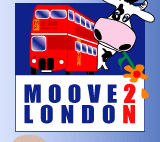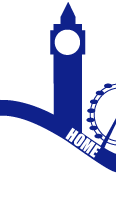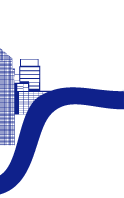TRANSPORT IN LONDON
 London is an enormous city and you're going to have to do a lot of travelling around so you can take in all the sights, get to work and of course see your friends who will probably be scattered both north and south of the river. Unless you're rich enough to take cabs everywhere, you're going to have to use public transport like the rest of us.
London is an enormous city and you're going to have to do a lot of travelling around so you can take in all the sights, get to work and of course see your friends who will probably be scattered both north and south of the river. Unless you're rich enough to take cabs everywhere, you're going to have to use public transport like the rest of us.Zones
The transport system in London is built around an arrangement of 6 zones. The most central of zones - Zone 1 includes the City, Westminster and various parts of some inner-London boroughs. Zone 2 forms a concentric ring around Zone 1, Zone 3 forms a concentric ring around Zone 2, and so on up until Zone 6.London Transport provides a useful free map showing the layout of the zones and areas, which is available at tube and train stations.
Look here for information on ticket types and fares for all types of transport- www.tfl.gov.uk/tfl/fares-tickets/2005/index.shtml.
Oyster - Oyster is the new travel smartcard way to journey around London. An electronic plastic blue card holds your ticket on it, and you simply touch it over one of the yellow Oyster sensors when you wish to pass through a ticket barrier/get on a bus etc.
For information on Oyster, visit: www.tfl.gov.uk/tfl/fares-tickets/2005/oyster.
London Underground -'The Tube'
The tube is made up of 12 different lines, all colour-coded and all named appropriately depending on the areas that they serve.(All 12 lines are: - Bakerloo, Central, Circle, District, East London, Hammersmith and City, Jubilee, Metropolitan, Northern, Piccadilly, Victoria, Waterloo and City).
How to use the tube:
If you are unfamiliar with the tube, then make sure that you carry a map. Locate the station that you wish to travel to and they station that you are starting from, and find which lines they are both on. Remember that you will sometimes need to take two or three tube trains to reach your destination. Some stations have several different tube lines running through them, enabling you to switch lines- for instance Kings Cross has 6 different lines running through it and is marked on a tube map as being an interchange station (indicated by a white circle with a black outline).1. At your starting tube station, follow the signs (named and colour-coded) towards the line that you wish to take e.g. Central line.
2. Once you have gone down the stairs/escalator, you will need to locate the correct platform of the particular line. Platforms are marked by west-bound or east-bound or north-bound and south-bound. Look at your tube map to determine which direction you are going in.
3. You need to be careful of split lines which appear for instance on the Northern line or Central line. These lines split into different branches with different destinations once they are outside of central London, so ensure that you are on the correct train by reading the destination on the front of the train, listening to the announcements, and viewing the board on the platform.
Buses
The bus network is far more complicated than that of the London Underground network. For a full list of bus routes, it is worth looking at the Spider maps on the Transport for London website -www.tfl.gov.uk/buses/spiders/borough.shtml
Buses are distinguished by their route number and their final destination which is clearly visible on the front of the bus, along with a handful of major stops along the way.
Bus stops along the route will have a bus timetable for the routes that the bus stop serves and sometimes a route map.
There are also many Night-Buses running through the night. These start with the letter N and then a route number, and many pass through Trafalgar Square, so this can be a good place to catch one if you've been out till early hours.
When you see a bus approaching that you wish to board, you should hold out your arm to indicate to the driver that you wish him to stop for you.
The way in which you board the bus, depends on the type of bus that it is:
Routemaster
A Routemaster is one of the old double-decker buses that have an open platform at the rear of the bus which you board. A Conductor is present on all Routemaster services and will approach you to check or sell you a ticket. To indicate your stop, you should pull the wire hanging along the left side of the bus on the downstairs, or press the red button on the pole if you are upstairs.Bendy Buses
There are now a number of the 18-metre long single-decker buses serving routes in the city. These are cashless, which speeds up the journey time as the driver doesn't have to deal with selling tickets, but does mean that you must have bought a ticket either at a Road-side Ticket Station, or at a regular Ticket Outlet. Passengers may board and alight from any of the three doors along the length of the bus.Other Regular Buses
These double-decker buses are boarded from the front, and you can either touch your Oyster card over the sensor, show the driver your Travelcard or purchase a ticket from the driver directly. You should alight from the rear of the bus only.DLR - Docklands Light Railway
The DLR connects the City with the Docklands. The service runs from Bank and Tower Gateway all the way through the Docklands to Stratford, Lewisham and Beckton.The actual trains used can seem a little surreal at first, as they are driven by an automatic system and do not require drivers. They are however staffed by a Passenger Service Agent who closes the doors when the system indicates that the train is ready to leave, and also assists with safety, travel information and checking tickets.
Ticket information for the DLR is available at -
www.tfl.gov.uk/dlr/tickets/index.shtml.
National Rail Services
Although the tube network covers many areas of London, particularly south of the river there are large areas that lack the convenience of the tube.Do not despair though, because there are many train routes that serve these areas.
Trains to the east and Essex depart from Liverpool Street, to the north from Kings Cross, St. Pancras and Euston, to the west from Paddington and Waterloo, and to the South from Victoria, London Bridge and also Waterloo.
Visit www.nationalrail.co.uk for information or call for train times.
For more information on Transport in London order our Moove2London starter pack on Our Services page, which contains more detailed information plus 2-month email support for your queries.











